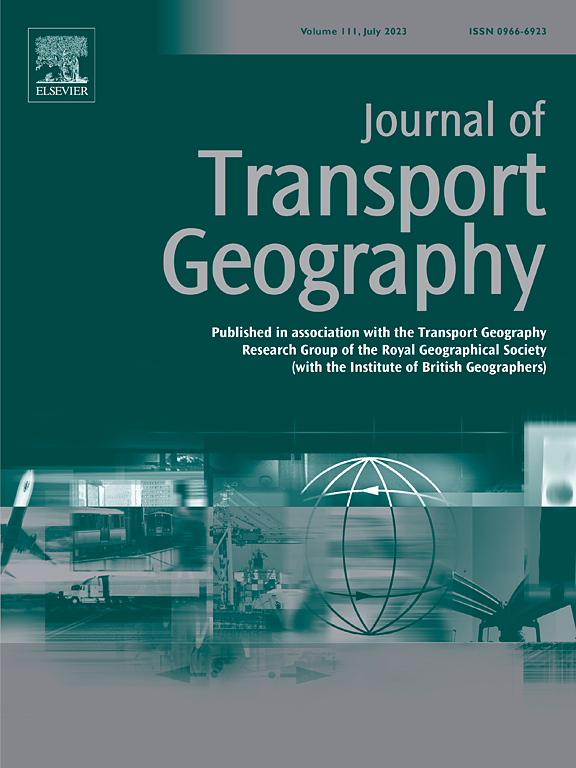将轨道布局纳入城市轨道脆弱性包络评估:以香港轨道交通网络为例
IF 6.3
2区 工程技术
Q1 ECONOMICS
引用次数: 0
摘要
漏洞包是近年来提出的一种分析运输网络漏洞的系统工具,它评估了漏洞的上下限,揭示了在不同中断严重程度下网络性能可能下降的范围。然而,在城市交通系统中,脆弱性包络通常使用简化的节点链路拓扑进行评估。虽然这种方法通过列车重新调度、灵活的停靠和冗余轨道实现的短周转时间来实现服务弹性,但它往往忽略了轨道布局在中断期间列车运行中的关键作用。此外,它可能无法准确反映系统行为,因为运营商可能会关闭铁路部分以保持服务效率,从而防止返工。本文将轨道布局纳入城市轨道交通网络脆弱性包络分析。本文以香港城市轨道交通网络为例,比较了基于轨道和基于链路的方法的脆弱性包络。通过考虑物理基础设施和业务战略,它提高了脆弱性评估的现实性,并为决策提供了可操作的见解。本文章由计算机程序翻译,如有差异,请以英文原文为准。
Integrating track layout into urban rail vulnerability envelope assessment: A case of Hong Kong rail transit network
Vulnerability envelope is a recently proposed systematic tool for analyzing transportation network vulnerability, which evaluates the lower and upper bounds of vulnerability and reveals the possible range of network performance degradations under various disruption severities. However, in urban transit systems, vulnerability envelopes are typically evaluated using a simplified node-link topology. While this approach captures service resilience through train rescheduling, flexible stops and short turnaround times enabled by redundant tracks, it often overlooks the critical role of track layout in train operations during disruptions. Moreover, it may fail to accurately reflect system behavior, as operators might close rail sections to maintain service efficiency, preventing turnback operations. This article integrates track layout into vulnerability envelope analysis for urban rail transit networks. The proposed method is demonstrated using the urban rail transit network in Hong Kong, comparing vulnerability envelopes derived from track-based and link-based approaches. By considering both physical infrastructure and operational strategies, it enhances the realism of vulnerability assessments and provides actionable insights for decision-making.
求助全文
通过发布文献求助,成功后即可免费获取论文全文。
去求助
来源期刊

Journal of Transport Geography
Multiple-
CiteScore
11.50
自引率
11.50%
发文量
197
期刊介绍:
A major resurgence has occurred in transport geography in the wake of political and policy changes, huge transport infrastructure projects and responses to urban traffic congestion. The Journal of Transport Geography provides a central focus for developments in this rapidly expanding sub-discipline.
 求助内容:
求助内容: 应助结果提醒方式:
应助结果提醒方式:


